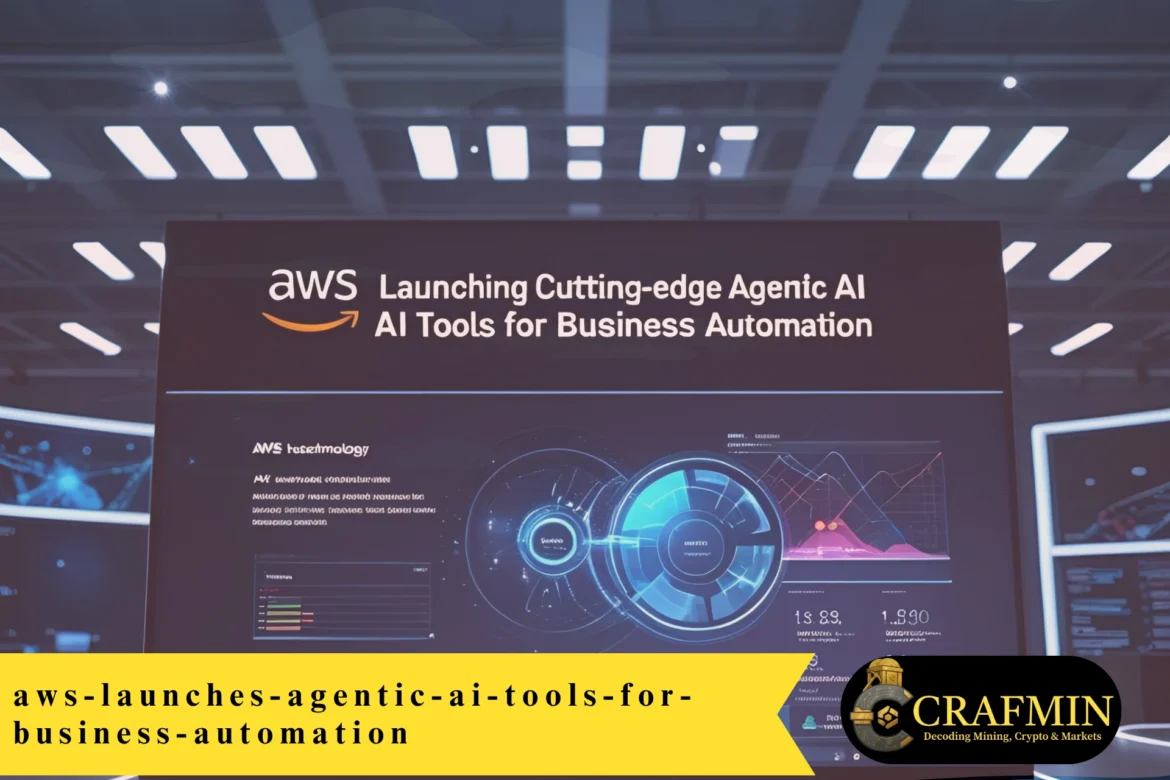Amazon Web Services (AWS) took the business technology leap when it released a sequence of agentic tools that would revolutionize business automation. They are a next generation of intelligent automation as opposed to simplistic triggers and responses in an attempt to trigger entire sequences of tasks automatically and intelligently.
This article is one aspect of a larger business computing movement: companies are extending beyond simple automation into applications that reason, learn, and act autonomously.
Introducing #AmazonBedrock #AgentCore—Accelerate AI Agents into production faster ⚡
Use any framework & any model, deploy with enterprise-grade security & controls, eliminate infrastructure complexity with comprehensive modular services. #AWS
https://t.co/55XN0pRP4e pic.twitter.com/rNSIlSoCPQ
— AWS AI (@AWSAI) July 17, 2025
Understanding What Agentic Tools Actually Do
Legacy automation is coded. If A is so then do B. But AWS’s new agentic tools aren’t founded on that. They’re built to detect live context, make their own decisions, and take credit for getting the job done on many platforms and apps.
Suppose an organization has different bits of software to deal with logistics, customer support, analysis, and stock. At some point, having all the systems together was done by some form of effort by hand or rigid automation scripts. AWS is trying to rid all that with the help of agentic tools. The tools are able to:
- Detect changes and respond
- Look out for activity between departments
- Adapt to conditions as they evolve
- Carry out workflows without humans
They are great choreographers with a vision of what needs to happen and the business logic upon which it is based.
Why It Matters to Businesses Today
Firms today are generally in need of a quiet foe: operational complexity. Slowness is epidemic, and costly, with workers compartmentalized into cliques within systems, platforms, and geography. By eliminating frictions in handoffs among systems, AWS’s new products can potentially save time and streamline processes.
Whether a rapidly growing startup trying to scale in a matter of months with limited means or an organisation seeking precision and scale, these products allow organisations to:
- Reduce human effort
- Increase consistency and reliability
- React rapidly to shifting priorities
- Reduce operating costs with smarter processes
Automating supply chain notifications, processing purchase orders – anything is feasible.
A Peek at AWS’s Strategy
Executives made one thing abundantly clear at a recent AWS Summit: this is not another automated system. It’s a business process game-changer.
Rather than helping just to do things faster, these systems are designed to execute complete end-to-end workflows from start to finish, micromanaging optional.
One AWS spokesperson summed it up: “We’ve built systems that not only understand intent but can act on it. Businesses shouldn’t have to babysit their automation. They should trust it to do the job.”
This vision for strategy states that AWS sees automation as something greater than a time-saver, but rather a business-critical foundation of the future.
Real-World Applications of How These Tools Might Work
Consider an online bank. It is handling thousands of customer queries, flagging fraud, and launching targeted marketing. With AWS’s new agentic capabilities, such a bank can:
- Flag suspicious transactions and initiate an internal probe
- Route customer complaints to the appropriate department with full account history
- Trigger customised marketing sequences without ITOr utilize a shipping company:
- It would be able to automatically reroute stuck packets
Notify customers for status without employeesOr utilize a delivery company:
- It would be able to automatically reroute late packages
- Notify customers for status changes without employees
- Real-time adjusting of delivery estimates as a function of weather or traffic
These are not simple automations, they’re adaptive, smart workflows.
Agentic AI and the Old Automation: What’s the Difference?
The greatest difference lies in flexibility.
Old automation: deterministic, static to rule-bound
Agentic AI apps: flexible, context-sensitive, dynamic
Practically, old tools are on/off switches. Agentic systems are more akin to intelligent assistants who know what to do, when to do it, and how to improvise if they make a mistake.
AI Agents vs. Agentic AI
→ AI Agents react to prompts; Agentic AI initiates and coordinates tasks.
→ Agentic AI includes orchestrators and meta-agents to assign and oversee sub-agents.
1/n
The Core Concepts
AI Agents and Agentic AI are often confused as… pic.twitter.com/4s4blygtdo
— Rohan Paul (@rohanpaul_ai) June 13, 2025
What This Means for the Future of Business
AWS’ move is a stepping stone into how companies will be going about automation. No longer just repeating the same old dull work quickly, more intelligent technology these days has the capacity to tackle complexity with a touch of the human hand.
As the competition accelerates and digitalization emerges as the new normal, the organizations investing in superior systems will be at a clear advantage. Speed, agility, and scale would be the mediators, and AWS hopes its agentic tools to be at the center of the dance.
Microsoft and the other cloud providers, Google, might just be compelled to follow suit by accelerating their own higher-level automation platforms.
Also Read: White-Collar Employees Exposed with Automation Underway
Industries That Ought to Take Heed
These are not the solutions for the tech giants only. They can be make-or-break:
- Financial Services: Make checks for compliance, notifications, client workflows easy
- E-commerce: Manage streams of orders, customer support, price updates easily
- Healthcare: Make bookings for patients, management of records, admin cost removal easy
- Government Agencies: Effective services requests management, data matching, and resource optimization
Even blockchain and cryptocurrency firms can reasonably automate aspects of smart contract deployment, risk profiling, and customer onboarding.
Final Thoughts
AWS’ application of agentic tools to deployment is a cloud-based automation game-changer. They do not merely offer efficiency, they offer intelligence, autonomy, and agility.
For businesses that aim to expand without expanding issues, this may be the key to developing sleeker, wiser processes. In our fast-evolving digital world, those who capitalize on clever automation won’t merely keep up, they’ll leave others behind.

